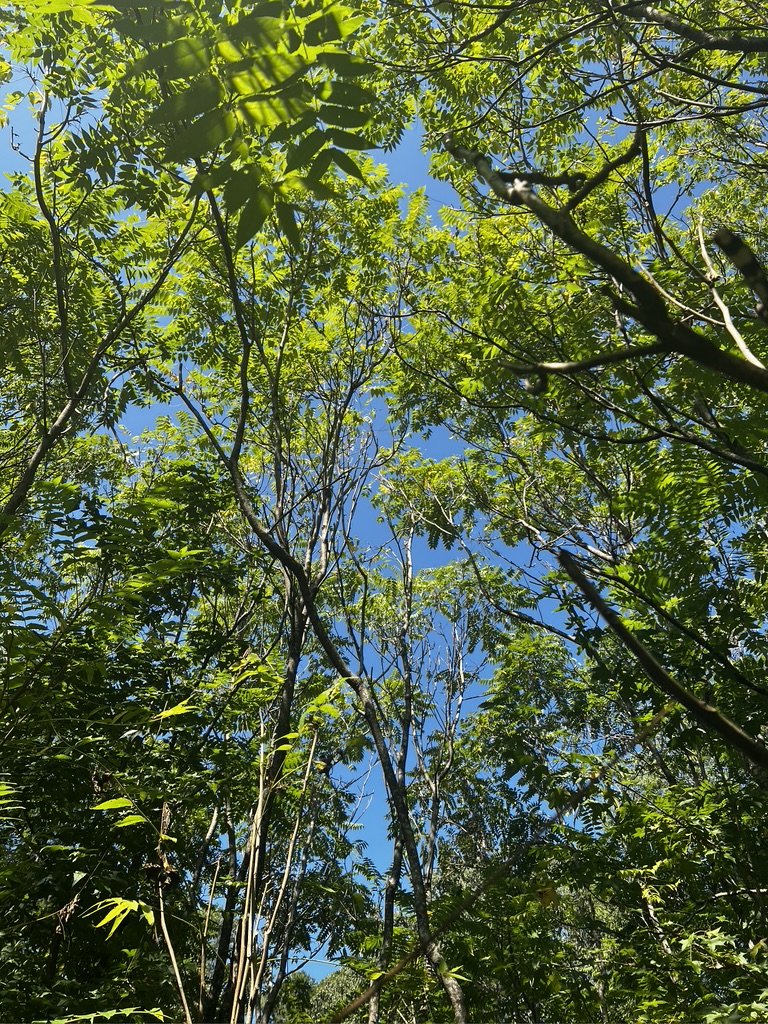By Paul Wang and Merritt Schulz
Why does Biodiversity matter? What is it?
Biodiversity is all the different kinds of life you’ll find in one area—the variety of animals, plants, fungi, and even microorganisms like bacteria that make up our local environment. Biodiversity matters to us.
We are all interconnected. A single species interacts with many other species in specific ways that produce benefits to us, like clean air, clean water, and healthy soils for efficient food production. If one piece goes missing, another piece starts to go missing too, losing the important functions species provide.
Native plants are incredibly important because they are the cornerstone of a healthy ecosystem. Invasive plants disturb the balance often causing a negative shift with local biodiversity. Because of this, we found it important to look at the biodiversity of our own campus.
What does biodiversity look like on our Campus?
Earlier in the year, the Environmental Sustainability class took a walk to the area of undeveloped land across Ridge Road. Many of the members of the class were unaware that this piece of land existed, but DA has actually owned it for quite some time.
When the class arrived at the land, we made a key observation about the land: it seemed to be split into two parts – a pasture and an old-growth forest. The land had previously been a horse pasture so it made sense that there was a grassy area. We arrived on the pasture side of the land which is obviously newer growth aside from an old cedar. Because this area is newer, more invasive species have crept onto the land after the area was bought. Some of these invasive species are Tree of Heaven and Japanese stilt grass. These species have really made their mark on The land. The Tree Of Heaven had spread so much that it has begun to choke out the cedar tree. the Japanese stilt grass on the other hand has created a thick bed along the surface; preventing anything else from growing. This is a great example of the detrimental effect invasive species can have on a piece of land if not maintained, as the native species are struggling to fight back.

After we got to the pasture we arrived at a gravel parking lot. This parking lot was used to store vehicles and equipment during DA’s construction projects. An effect they did not intend was that it created a barrier between the pasture and the old-growth forest. Once we had gone into the old-growth forest we noticed just the beauty of the trees that were almost 100 years old. The air was cooler and it was really pleasant being inside such a stunning display of nature.

After we returned from the area of land across the street, our class realized that DA possesses a very special piece of land that is a perfect example of the human effect on our environment.
How has Durham Academy worked to support local Biodiversity
- Planting Milkweed!
A few weeks ago, the Student Government Sustainability Committee planted a field of milkweed. Building upon a previous attempt last year, we cleared a parcel of land near the lower school for planting. The committee decided to incorporate local milkweed plants and the new milkweeds together in the field. We transplanted a local nearby sprouting plant called dogbane, a close relative of milkweed. The committee hopes that the field will flourish with milkweed and dogbane by spring.

Milkweed and dogbane are incredibly important to local biodiversity. These plants provide greater resilience to disaster events compared to the area without these plants. These plants attract other insects like the monarch butterfly to the region, increasing and supporting biodiversity.
